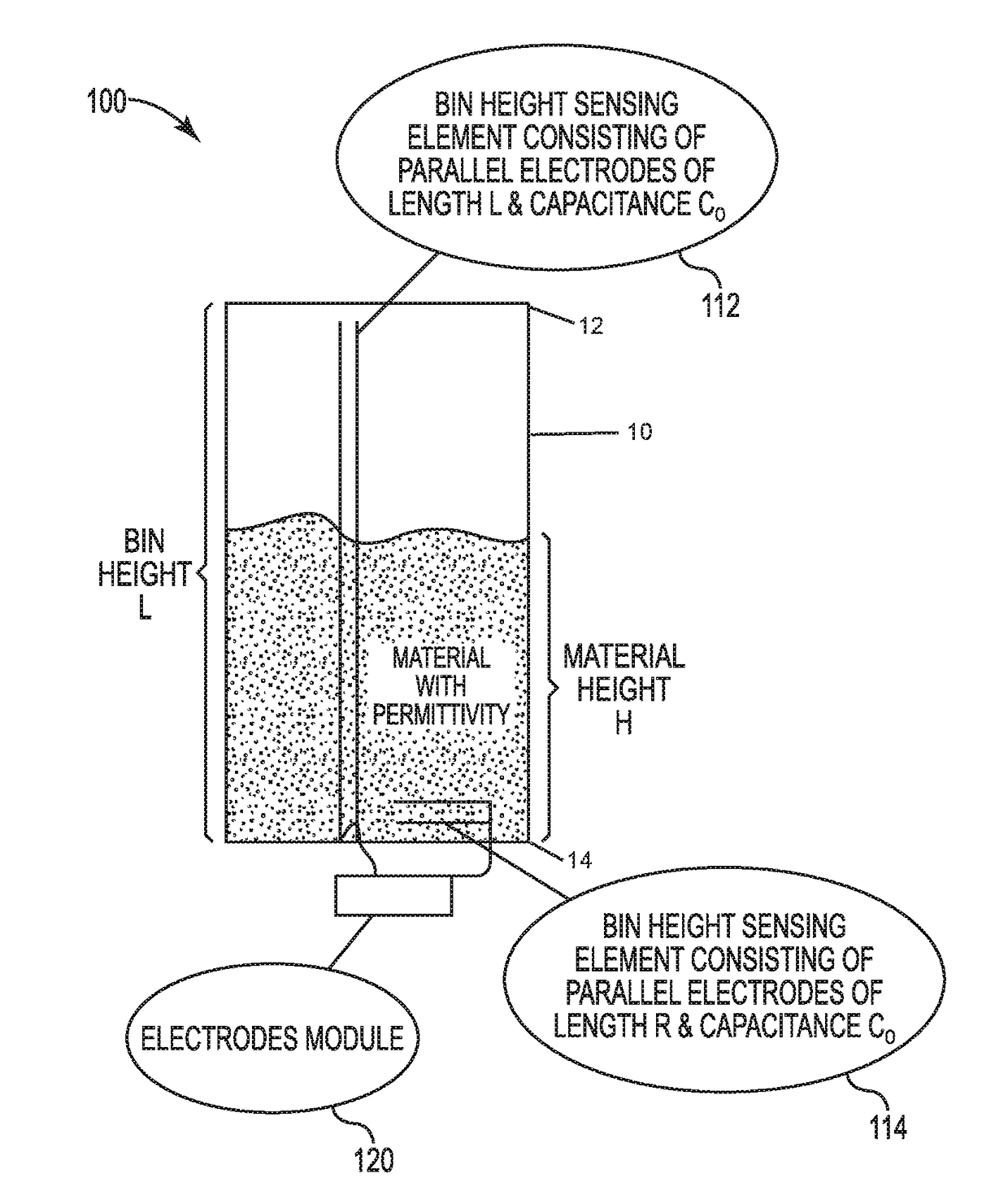Calibration-free continuous bin level sensor
a continuous bin level sensor and calibration-free technology, applied in the direction of liquid/fluent solid measurement, instruments, machines/engines, etc., can solve the problems of reducing the flexibility of installation, affecting the design and production of capacitive sensors, and affecting the accuracy of measurement results
- Summary
- Abstract
- Description
- Claims
- Application Information
AI Technical Summary
Benefits of technology
Problems solved by technology
Method used
Image
Examples
Embodiment Construction
[0029]Following are more detailed descriptions of various related concepts related to, and embodiments of, methods and apparatus according to the present disclosure. It should be appreciated that various aspects of the subject matter introduced above and discussed in greater detail below may be implemented in any of numerous ways, as the subject matter is not limited to any particular manner of implementation. Examples of specific implementations and applications are provided primarily for illustrative purposes.
[0030]Referring now to the Figures, in particular to FIGS. 1, 2 and 5, in one example embodiment, a sensor system or assembly 100 for use on a bin or container 10 consists of two sensing elements 112 and 114, an electronics module 120 and an optional shield material 130 (in this example, a metal tape). A first sensing element 112 is a bin level element that is configured to be long enough to span from a top 12 to a bottom 14 of bin 10. A second sensing element 114 is a refere...
PUM
 Login to View More
Login to View More Abstract
Description
Claims
Application Information
 Login to View More
Login to View More - R&D
- Intellectual Property
- Life Sciences
- Materials
- Tech Scout
- Unparalleled Data Quality
- Higher Quality Content
- 60% Fewer Hallucinations
Browse by: Latest US Patents, China's latest patents, Technical Efficacy Thesaurus, Application Domain, Technology Topic, Popular Technical Reports.
© 2025 PatSnap. All rights reserved.Legal|Privacy policy|Modern Slavery Act Transparency Statement|Sitemap|About US| Contact US: help@patsnap.com



